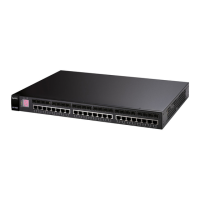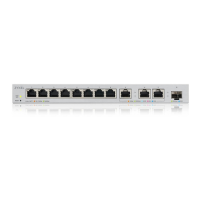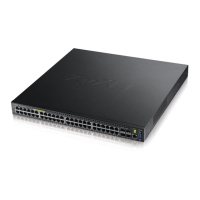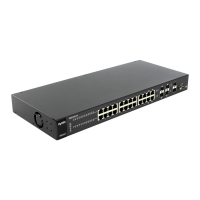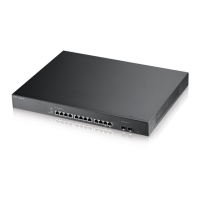Chapter 49 RIP
XGS4600 Series User’s Guide
447
* Settings in this row apply to all entries.
Use this row only if you want to make some settings the same for all entries. Use this row first to
set the common settings and then make adjustments on a per entry basis.
Note: Changes in this row are copied to all the entries as soon as you make them.
Interface This field displays the name of the IPv6 interface you created on the Switch.
Active Select the check box to enable the entry.
Method Specify the mechanism used by the interface to prevent routing loops.
•Select No-Horizon to not use any mechanism on this interface to prevent routing loops.
•Select Split-Horizon to prevent the interface from sending back the routing information
received and learned from a neighbor. This also helps save bandwidth.
•Select Poison-Reverse to have the interface set the metric of routes learned from a
neighbor to 16 and send the routing information back. The neighbor will then delete the
routes from its routing table.
Metric The metric represents the “cost” of transmission for routing purposes. IP routing uses hop count
as the measurement of cost, with a minimum of 1 for directly connected networks. Enter a
number that approximates the cost for this link. The number need not be precise, but it must be
between 1 and 15. In practice, 2 or 3 is usually a good number.
Apply Click Apply to save your changes to the Switch’s run-time memory. The Switch loses these
changes if it is turned off or loses power, so use the Save link on the top navigation panel to
save your changes to the non-volatile memory when you are done configuring.
Cancel Click Cancel to begin configuring this screen afresh.
Table 203 IP Application > RIP > IPv6 RIP (continued)
LABEL DESCRIPTION
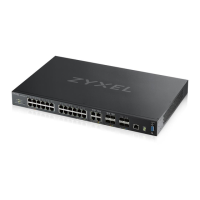
